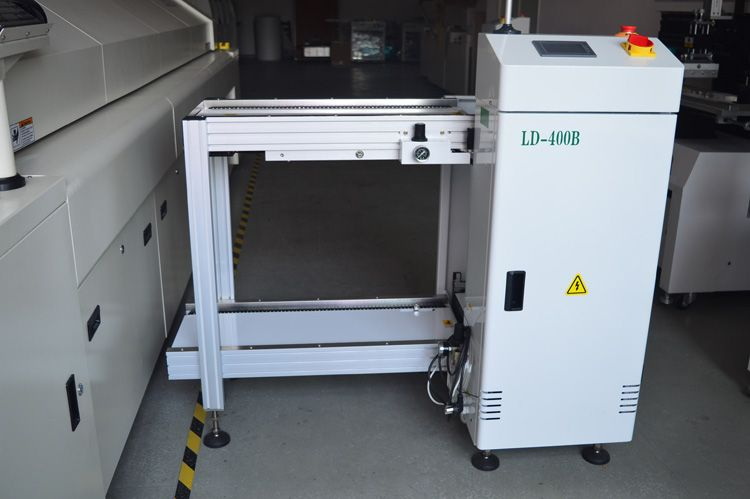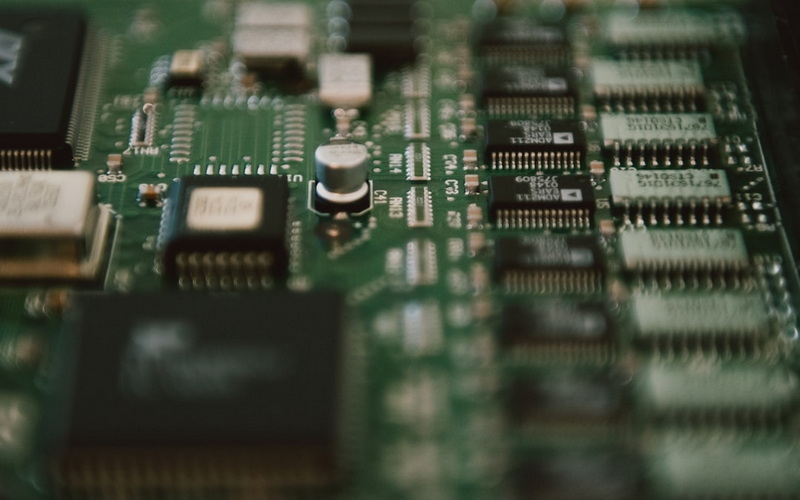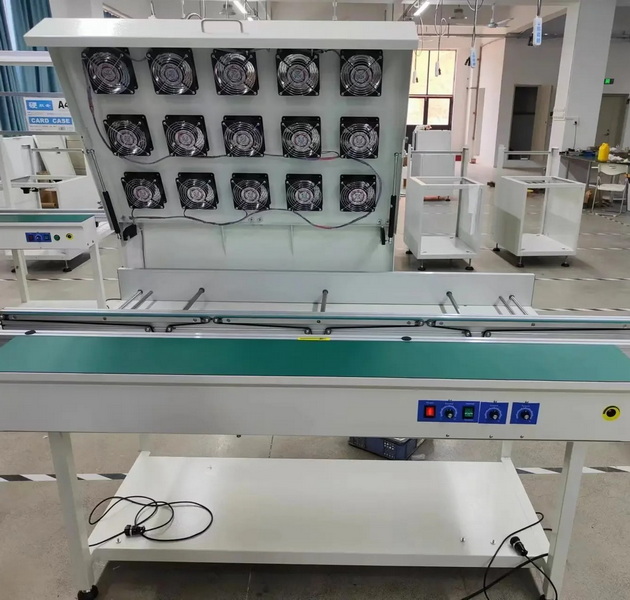Content Menu
● Understanding the SMT SMD PCB Unloader
● Why Regular Maintenance is Crucial
● Daily Maintenance Tasks
>> 1. Cleaning
>> 2. Visual Inspection
>> 3. Functional Checks
● Weekly Maintenance Tasks
>> 1. Lubrication
>> 2. Sensor and Nozzle Cleaning
>> 3. Chain and Belt Tension
● Monthly Maintenance Tasks
>> 1. Deep Cleaning
>> 2. Lubricant Replacement
>> 3. Electrical and Mechanical Checks
● Annual Maintenance Tasks
>> 1. Comprehensive Inspection
>> 2. Calibration and Software Updates
● Best Practices for Maintaining Your SMT SMD PCB Unloader
● Troubleshooting Common Issues
● Conclusion
● FAQ
>> 1. How often should I perform maintenance on my SMT SMD PCB unloader?
>> 2. What lubricants are best for SMT PCB unloaders?
>> 3. How can I prevent PCB damage during unloading?
>> 4. What are common signs that maintenance is needed?
>> 5. Can software updates affect unloader performance?
Maintaining your SMT SMD PCB unloader is essential to ensure smooth, efficient, and reliable operation in your surface-mount technology (SMT) production line. The unloader plays a critical role by automatically removing completed printed circuit boards (PCBs) from the assembly line, reducing manual labor, minimizing damage risks, and boosting throughput. Proper maintenance not only extends the lifespan of your SMT SMD PCB unloader but also helps maintain high production quality and reduces costly downtime.

Understanding the SMT SMD PCB Unloader
An SMT SMD PCB unloader is an automated machine designed to remove finished PCBs from the SMT line. It typically features:
- Automated unloading process to reduce manual handling
- Compatibility with various PCB sizes via automatic width adjustment
- PLC control systems for precise operation
- Secure conveyor and clamping structures to prevent PCB damage
- Integration with magazine racks for efficient stacking and transfer
These features make the unloader indispensable for modern SMT lines, enhancing efficiency and product quality while lowering labor costs.
The unloader is often integrated at the end of the SMT assembly line, working seamlessly with pick-and-place machines, reflow ovens, and inspection stations. Its ability to handle PCBs gently and efficiently is critical for maintaining the integrity of delicate components and solder joints.
Why Regular Maintenance is Crucial
Regular maintenance of the SMT SMD PCB unloader ensures:
- Consistent and accurate PCB handling
- Prevention of mechanical wear and tear
- Avoidance of unexpected breakdowns and production halts
- Prolonged equipment lifespan
- Reduced repair costs and improved return on investment
Neglecting maintenance can lead to decreased throughput, increased defects, and costly downtime. For example, a worn conveyor belt or misaligned sensor can cause PCBs to jam or drop, leading to production delays and potential damage to expensive boards.
Moreover, the SMT environment often involves exposure to solder paste, flux residues, and fine dust, which can accumulate on moving parts and sensors, affecting the unloader's performance. Regular cleaning and inspection are therefore vital to prevent such issues.
Daily Maintenance Tasks
1. Cleaning
- Wipe down the machine surface to remove dust, solder paste, and debris.
- Clean conveyor belts, sensors, photoelectric and magnetic sensors to ensure accurate detection and transport.
- Use non-fiber cloth or paper to avoid residue buildup.
- Pay special attention to suction nozzles and pneumatic clamps, as contamination here can reduce gripping efficiency.
Daily cleaning prevents residue buildup that can interfere with sensor accuracy and mechanical movement. Using compressed air to blow out dust from hard-to-reach areas is also recommended.
2. Visual Inspection
- Check for loose screws, damaged cables, or worn parts.
- Inspect the conveyor chain for slack or wear.
- Verify the condition of pneumatic clamps and magazine racks.
- Look for signs of corrosion or damage on metal parts.
Visual inspection helps catch early signs of wear or damage before they escalate into major faults. Tightening loose fasteners and replacing frayed cables promptly prevents safety hazards and machine failures.
3. Functional Checks
- Test automatic and manual operations to confirm smooth PCB transfer.
- Observe the lifting mechanism and cylinder movement for smoothness.
- Confirm that sensors detect PCBs accurately without false triggers.
Functional checks ensure that the unloader operates as intended and that all safety interlocks are working correctly. Any irregularities should be addressed immediately.

Weekly Maintenance Tasks
1. Lubrication
- Apply lubricating oil to moving parts such as linear bearings, ball screws, and chains.
- Avoid over-lubrication which can cause overheating or motor overload.
- Use appropriate lubricants recommended by the manufacturer.
Lubrication reduces friction and wear, preventing premature failure of mechanical components. It also helps maintain smooth, quiet operation.
2. Sensor and Nozzle Cleaning
- Clean suction nozzles and sensors to prevent clogging and ensure accurate operation.
- Check optical axes and photoelectric sensors for dirt or misalignment.
- Use alcohol-based cleaners for sensors if recommended.
Dirty or misaligned sensors can cause missed detections or false alarms, disrupting the unloading process. Regular cleaning maintains sensor reliability.
3. Chain and Belt Tension
- Check and adjust the tension of the transport chain and conveyor belts to avoid slippage or excessive wear.
- Replace worn belts or chains promptly to maintain stable PCB transport.
Proper tension prevents mechanical failures and ensures consistent PCB movement through the unloader.
Monthly Maintenance Tasks
1. Deep Cleaning
- Thoroughly clean the machine head, conveyor, and magazine racks.
- Remove accumulated dirt and solder residues from moving parts.
- Disassemble removable parts if necessary for a more thorough clean.
Deep cleaning prevents long-term buildup that can degrade performance or cause mechanical jams.
2. Lubricant Replacement
- Replace lubricants on the gearbox and movable shafts as needed.
- Drain old oil and refill with fresh lubricant to maintain smooth gearbox operation.
Old or contaminated lubricants lose effectiveness and can accelerate wear. Scheduled replacement maintains optimal machine function.
3. Electrical and Mechanical Checks
- Inspect grounding wires and electrical connections for security and corrosion.
- Check for wear on mechanical components and replace worn parts promptly.
- Verify pneumatic system integrity, including hoses and fittings.
Ensuring electrical and mechanical systems are sound prevents unexpected failures and safety issues.
Annual Maintenance Tasks
1. Comprehensive Inspection
- Perform a full inspection of power connections, pneumatic systems, and mechanical parts.
- Check motor insulation and gearbox condition.
- Replace any worn or damaged components to avoid unexpected failures.
This thorough check is critical for long-term reliability and safety compliance.
2. Calibration and Software Updates
- Calibrate sensors and alignment systems to maintain precision.
- Update PLC and control software to the latest version for improved performance and bug fixes.
Calibration ensures the unloader handles PCBs within specified tolerances, reducing defects and jams. Software updates can improve automation efficiency and introduce new features.
Best Practices for Maintaining Your SMT SMD PCB Unloader
- Avoid Excessive Shock: Handle the unloader carefully during transport or repositioning to prevent damage.
- Maintain Air Supply: Keep pneumatic cylinders supplied with clean, dry air at recommended pressure (usually around 5-6 kg/cm²).
- Prevent Water and Contaminants: Do not allow water or organic solvents near motors or electrical components to avoid insulation damage.
- Use Compatible Parts and Lubricants: Always use manufacturer-recommended lubricants and replacement parts to ensure compatibility and performance.
- Train Operators: Ensure staff are trained to operate and perform basic maintenance on the unloader, minimizing operator errors and machine misuse.
- Keep Maintenance Logs: Document all maintenance activities, repairs, and replacements to track equipment health and plan future maintenance.
Adhering to these best practices helps maintain the unloader in peak condition and extends its service life.
Troubleshooting Common Issues
- Chain Noise or Slippage: May indicate insufficient lubrication or chain wear; apply thicker lubricant or replace chain if needed.
- Motor Overheating: Often caused by excessive lubricant or motor overload; check oil levels and motor load.
- Sensor Malfunction: Clean or realign sensors and check wiring connections.
- PCB Jamming: Inspect conveyor and clamping mechanisms for obstructions or misalignment.
- Software Errors: Update control software and consult technical support if problems persist.
Identifying and addressing these issues early prevents production disruptions and costly repairs.
Conclusion
Maintaining your SMT SMD PCB unloader is vital for achieving optimal performance, high production efficiency, and long equipment life. By following a structured maintenance schedule-daily cleaning and inspection, weekly lubrication, monthly deep maintenance, and annual comprehensive checks-you can minimize downtime, reduce defects, and protect your investment. Proper care of your unloader ensures smooth PCB handling, enhances product quality, and supports a seamless SMT production line. Investing time and resources in regular maintenance ultimately saves money and improves overall manufacturing reliability.

FAQ
1. How often should I perform maintenance on my SMT SMD PCB unloader?
Routine maintenance such as cleaning and inspection should be done daily or weekly, with lubrication weekly, monthly deep maintenance, and annual comprehensive checks recommended for optimal performance.
2. What lubricants are best for SMT PCB unloaders?
Use manufacturer-recommended lubricating oils and greases designed for precision machinery. Avoid over-lubrication to prevent overheating and motor overload.
3. How can I prevent PCB damage during unloading?
Ensure the conveyor and clamping structures are clean, properly aligned, and functioning smoothly. Regular maintenance reduces mechanical faults that can cause PCB damage.
4. What are common signs that maintenance is needed?
Increased noise, motor overheating, PCB jamming, sensor errors, or irregular conveyor movement are indicators that maintenance or repair is required.
5. Can software updates affect unloader performance?
Yes, updating the PLC and control software can fix bugs, improve accuracy, and add features that enhance unloader operation and reliability.




















